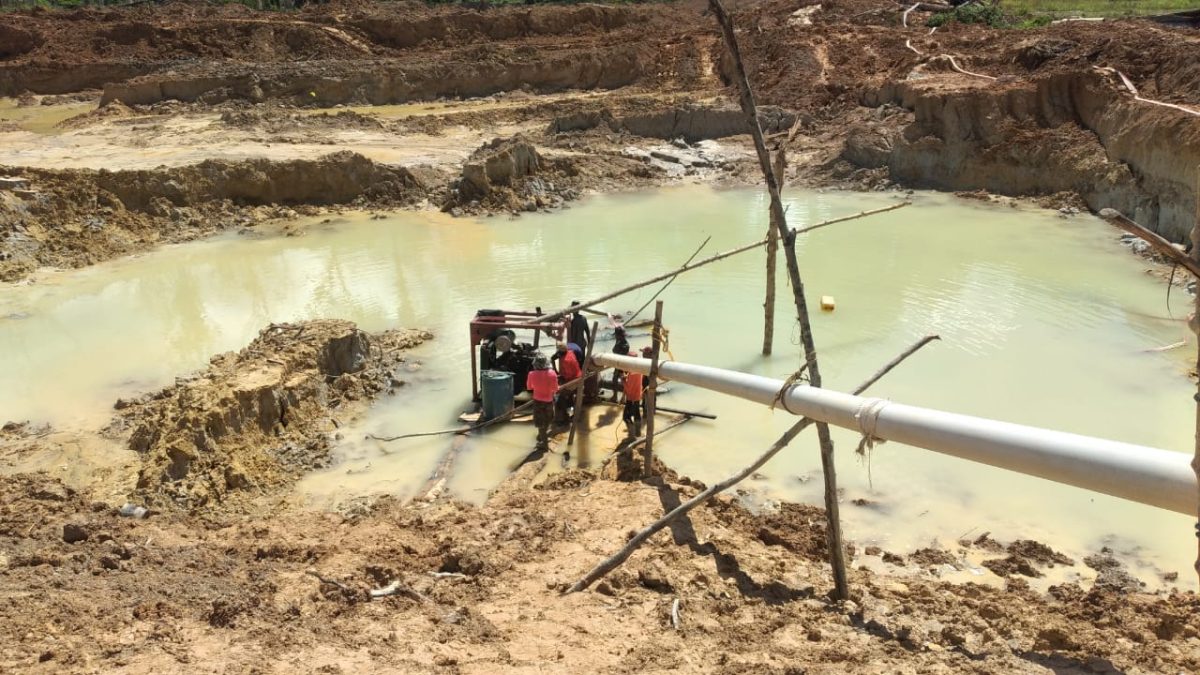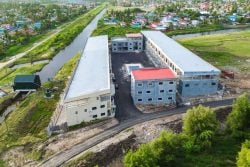The Guyana Human Rights Association (GHRA) is taking the government to task for failing to insulate the environment and Indigenous communities from the negative effects of gold mining and makes the case that the many benefits it accords the sector do little to encourage responsible action.
In a release yesterday, GHRA referenced the recent statement from the Ministry of Natural Resources (MoNR) which catalogued the extensive perks, concessions and privileges extended to the gold-mining sector, including tax reductions, duty-free concessions, simplified licensing arrangements, expansion of available mining properties in conflicted areas such as Marudi Mountains, and removal of protective regulations. All this, the Association added, without mentioning the “huge environmental and human cost” perpetrated by this industry. It was noted too that the ministry’s statement concluded with a reminder that this unwavering support was “in keeping with the ruling party Manifesto prior to the last elections.” Further, the GHRA bemoaned the fact that even road-building in interior regions has become mining-driven rather than influenced by community or environmental considerations.
The release pointed out that since all mining has a significant effect on the environment, the Environmental Protection Act 1996, (Section 11) and Schedule 4, (item 9) mandates that Environmental Impact Assessments (EIA) and Environmental Permits (EP) are to be undertaken for each and every mining operation. However, according to the annual reports of the Guyana Extractive Industries Transparency Initiative (GY-EITI), the Guyana Geology & Mines Com-mission (GGMC) has not enforced such requirements for many years for the thousands of small-scale mining claims or medium-scale mining permits covering millions of hectares.
GHRA lamented the fact that most of Guyana’s prized large rivers have been reduced to health and safety hazards by gold mining, with river banks and the actual course of rivers having been altered by illegal hydraulic mining. Added to this is the failures to apply the several GGMC Codes of Practice to the waste in mine tailings now spilling polluted sediment into the creeks and rivers. “No effort has been made to apply penalties for these transgressions despite the fact that River Navigation Act (cap. 50:01, 1998) and the State Lands Act 1903/1972 (Section 22) states ‘Everyone who willfully causes any impediment to the free use or navigation of any river or navigable creek, shall be liable to a fine of ninety-seven thousand five hundred dollars, unless he has previously obtained permission under this Act or the Forests Act to cause the impediment.’”
It is the contention of the Association that mining disrupts riverine ecosystems, leading to habitat destruction, reduced water quality, and the loss of bio-diversity, which makes it imperative that the EIA process “be consistently, rigorously and transparently applied.” And although regular and thorough inspections, coupled with stringent penalties for non-compliance are required, they are currently ignored given the understaffing of the GGMC.
The difficulty here, the GHRA said is that a handful of field Mines Officers and Wardens are expected to monitor an industry which has issued thousands of mining claims, and penalties for breaches of the various rules and regulations do not disincentivize breaches. As such there is a need for penalties to be much more severe, while prioritising the restoration of mining sites and enforcing robust environmental regulations and this can mitigate long-term environmental damage, protect vital water resources, and promote sustainable development.
The release referred to an experiment undertaken by the GGMC some years ago to assess the cost of mine-site restoration. It was discovered that the cost of a small-scale restoration by a contracted company was estimated to be in the region of $6 million as compared to the “derisory” sum of $100,000 for restoration – the obligatory environmental bond – which is treated by the majority of miners as payment to the GGMC to get the job done.
Moving on to the negative effects of mining on Indigenous communities, the release noted that longstanding claims by Indigenous communities are aggravated by land ownership policies, which have been progressively dominated since colonial times by the mineral potential of lands rather than ownership claims.
Quiet enjoyment
“The most severe consequences of the free-for-all in the mining sector are felt by Amerindian communities who have seen their land rights progressively eroded despite the catalogue of Statutes and Regulations that provide a legal defence. Amerindian rights to ‘quiet enjoyment of their land and surroundings’ have trumped any mining claims in a series of laws. The Mining Regula-tion of 1905 stated ‘All land occupied or used by the Aboriginal Indians, and all land necessary for the quiet enjoyment by the Aboriginal Indians of any Indian settlement, shall be deemed to be lawfully occupied by them’(Section 199). Virtually the same language is reproduced in the Mining Act 1989 (Section 111) and similarly reproduced in the Water and Sewerage Act Cap. 30-01 2002 (Section 94).”
The GHRA therefore, feels strongly that this “quiet enjoyment’ clause ought to constitute a deterrent to the GGMC’s issuance of small-scale mining claims or medium-scale mining permits before a due diligence check is completed in each requested area in or including a titled Amerindian Village (required in section 53 of the Amerindian Act 2006). However, it made sure to point out that in practice, as shown in the High Court cases in 2009 (Arau Village) and 2012-3 (Isseneru Village), such checks appear not to have been made and mining concessions have been issued by the GGMC over titled and untitled Amerindian lands without the knowledge of the Amerindian communities.
The release homed in on mercury which is used in the gold recovery process and is known to pollute aquatic life, increase mortality and reproductive failures, and disrupts food chains. Here the government was criticised for not making enough effort to reduce the incidence and scale of mercury methylation into the environment and food chain, as well as taking the urgent remedial action the situation merits.
Mention was made of a study undertaken in 2008 of mercury use by both terrestrial and river based hydraulic dredges where the amount estimated used annually was 11.37 tonnes. It referenced data that showed that official imports peaked in 2011 at 5.4 times the national requirement and grew to an estimated 35.82 tonnes in 2013. Over this period total imports were 504 tonnes with an excess of approximately 355 tonnes, which is 10 years’ worth of demand at 2013 levels. It also noted the allegation that much of this mercury is smuggled into Suriname where importation of mercury has been prohibited.
“Environmental neglect and human suffering, together with bio-diversity and wildlife loss, is not even considered a cost by the gold industry or government. These costs should be added to legal and illegal export of profits from gold mining, at no benefit whatever to their sovereign owners – the citizens of Guyana. In these circumstances the rationale for government subsidies to this industry requires urgent explanation. Moreover, they represent a stark contradiction to the Low Carbon Development Strategy 2030 (LCDS 2030) which figures prominently in government speeches at overseas events”, the GHRA said.






